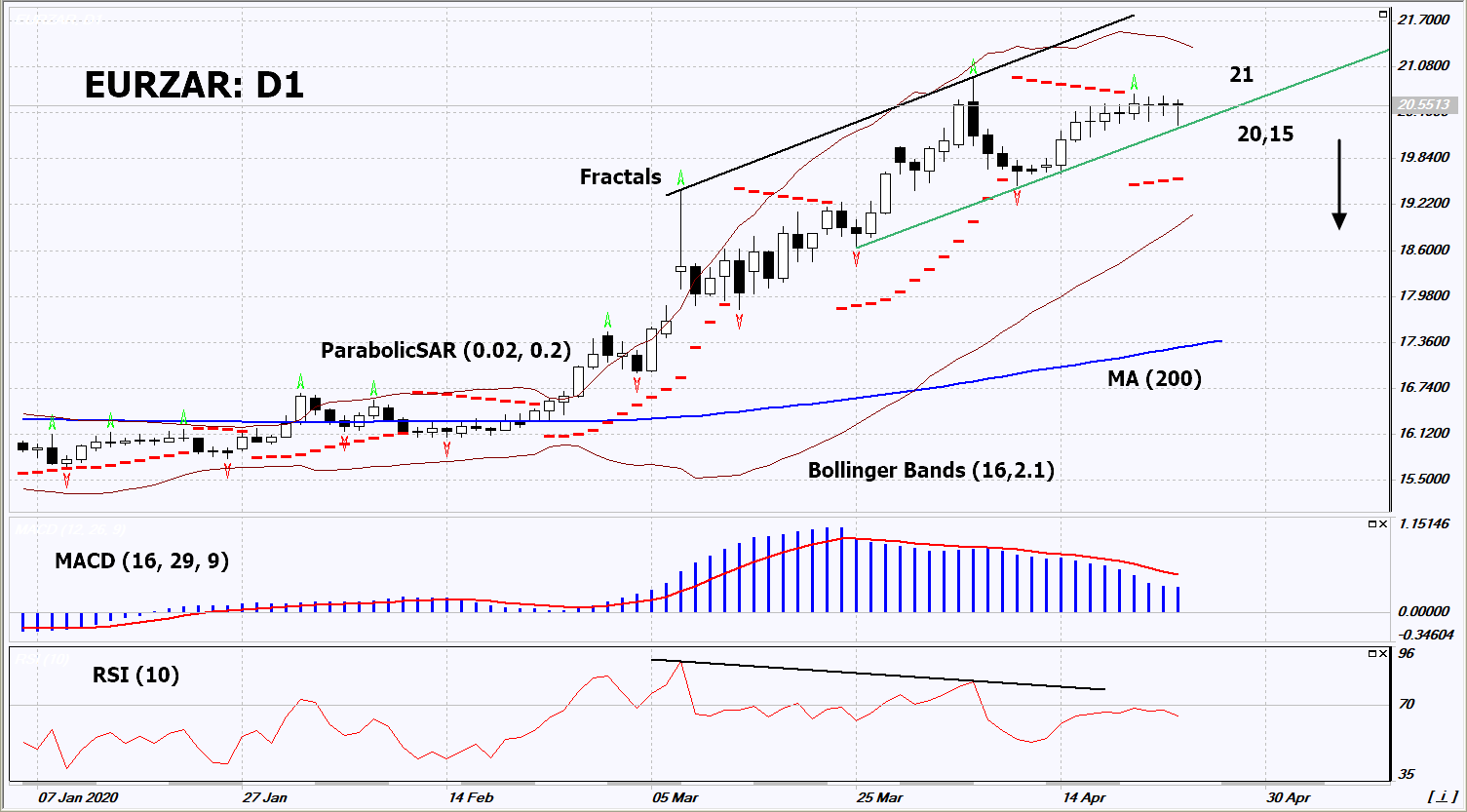- 分析
- 技术分析
EUR/ZAR 技术分析 - EUR/ZAR 交易: 2020-04-27
EUR/ZAR 技术分析总结
低于 20,15
Sell Stop
高于 21
Stop Loss
| 指标 | 信号 |
| RSI | 卖出 |
| MACD | 卖出 |
| MA(200) | 中和 |
| Fractals | 中和 |
| Parabolic SAR | 买进 |
| Bollinger Bands | 中和 |
EUR/ZAR 图表分析
EUR/ZAR 技术分析
On the daily timeframe, EURZAR: D1 is in a growing trend. At the same time, its increase slowed down. A number of indicators of technical analysis formed signals for a further decrease. We do not exclude a bearish movement if EURZAR falls below the support line of the uptrend and its last low: 20.15. This level can be used as an entry point. We can set a stop loss above the last two upper fractals and the historical maximum: 21. After opening a pending order, we move the stop loss to the next fractal maximum, following the Bollinger and Parabolic signals. Thus, we change the potential profit / loss ratio in our favor. After the transaction, the most risk-averse traders can switch to a four-hour chart and set a stop loss, moving it in the direction of the trend. If the price overcomes the stop level (21) without activating the order (20.15), it is recommended to delete the order: the market sustains internal changes not taken into account.
外汇交易 基本面分析 - EUR/ZAR
The President of the Republic of South Africa Cyril Ramaphosa announced mitigation of quarantine. Will EURZAR quotes decrease?
The downward movement means the strengthening the South African rand against the euro. Mitigation of quarantine in South Africa from May 1 will occur as a result of the weakening coronavirus pandemic. Investors responded positively to this report and expect that South Africa’s economic losses will not be so great. Earlier, GDP was expected to fall by 4% in 2020. Now there are more than 4 thousand patients in South Africa. Since the beginning of the pandemic, 79 people died there, and almost one and a half thousand people recovered. The euro, in turn, is under pressure from the publication of weak indicators of the German business climate. This is evidenced by the IFO Business Climate indicators for April and GfK Consumer Confidence for May. An additional negative factor was the decline in the Eurozone Manufacturing PMI business indicator in April.
附注:
本文针对宣传和教育, 是免费读物. 文中所包含的信息来自于公共渠道. 不保障信息的完整性和准确性. 部分文章不会更新. 所有的信息, 包括观点, 指数, 图表等等仅用于介绍, 不能用于财务意见和建议. 所有的文字以及图表不能作为交易的建议. IFC Markets及员工在任何情况下不会对读者在阅读文章中或之后采取的行为负责.


